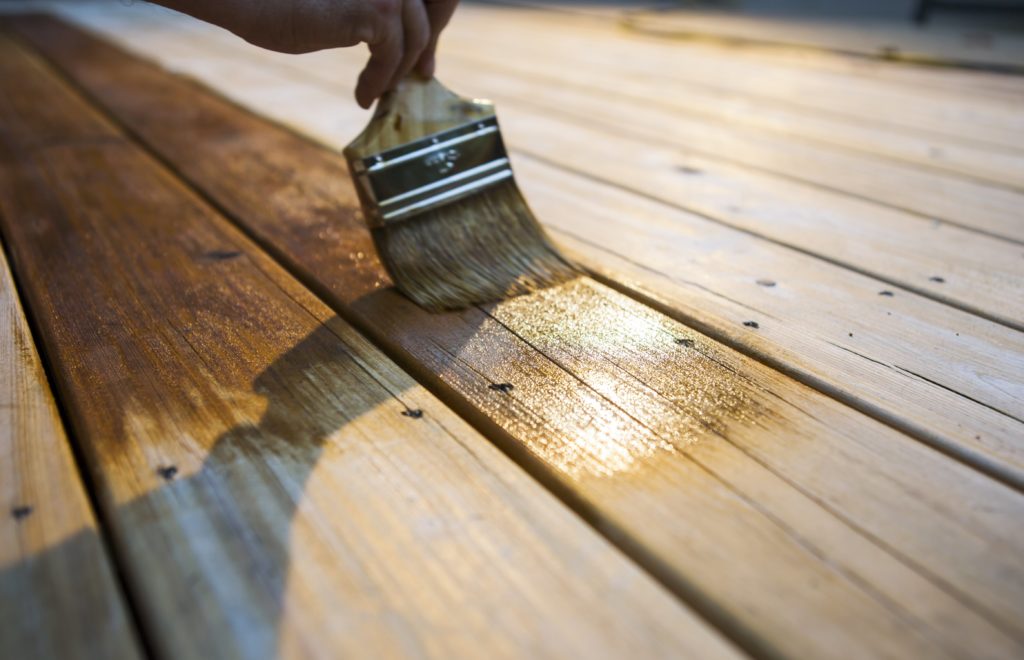If you’re tired of staring at the same tabletop for years on end or have recently found a piece that looks a little rough, you can easily fix it up and give it new life. From staining to painting, using epoxy, polishing, or even making button and tile art, there are many ways to overhaul any wooden surface. You can even make a new coffee table or polish your deck, if you’re up to the task! We’ll briefly discuss the pros and cons of each method to decide which is right for you.

- Staining Pros
- This is one of the easiest and quickest ways to resurface a tabletop and can be done many times throughout the years.
- You can choose a stain that matches the surrounding furniture and ambiance.
- Stains are affordable, and a little goes a long way.
- There are numerous stains to choose from.
- Staining Cons
- You’ll need to sand the entire piece down to raw wood, so the stain soaks in easily.
- If your table is damaged, the stain will highlight it.
- You’ll need a well-ventilated area and gloves to protect yourself.
- You’ll need a sealant once you finish to protect the surface.
- Painting Pros
- Very little prep is involved for painting a wooden surface.
- Painting covers minor damages to the wood.
- You can easily use stencils to create fancier results or choose crackle paints and sponge methods to alter the look.
- The color options are endless and affordable.
- Painting Cons
- If your table was already painted, you’ll need to remove that paint or choose one with the same base; otherwise, the paint won’t adhere.
- Practice makes perfect, and you’ll want to practice any methods beyond basic painting.
- Paint can easily be damaged after it’s done and is difficult to clean without a sealant.

- Epoxy Pros
- Epoxy results in a gorgeous finish that is sure to impress not only you but anyone else who sees it.
- You can add mica powders to tint it and other items like photos, shells, wood pieces, coins, or old toys to give it a quirky vibe.
- With proper care, epoxy lasts a long time and is very easy to clean.
- Epoxy Cons
- Epoxy is very expensive.
- You’ll need to build barriers around your piece to contain the epoxy as you pour it.
- This is a multi-step process that you’ll want to research thoroughly before starting.
- Epoxy takes days to cure correctly.
- Button and Tile Mosaic Pros
- This method covers all existing damage to a piece.
- You can create beautiful patterns and mosaics with a bit of planning.
- It’s very eco-friendly as you’ll be reusing items that would otherwise be disposed of.
- Button and Tile Mosaic Cons
- It is time-consuming, often taking days to complete a small area.
- You’ll need to use glue or grout to hold your pieces in place.
- It can result in uneven surfaces.
- You’ll need a large work area to plan the pattern out before starting; otherwise, you might find it doesn’t fit perfectly on your wooden surface.
- You’ll need a lacquer to cover the finished piece and protect it and to protect yourself as some tile has sharp edges.
Now that you know the pros and cons of each, it’s time to decide which one is right for you! Don’t stress the finished result; this is all about having fun and personalizing your items. You’ll be proud when all your hard work pays off!
